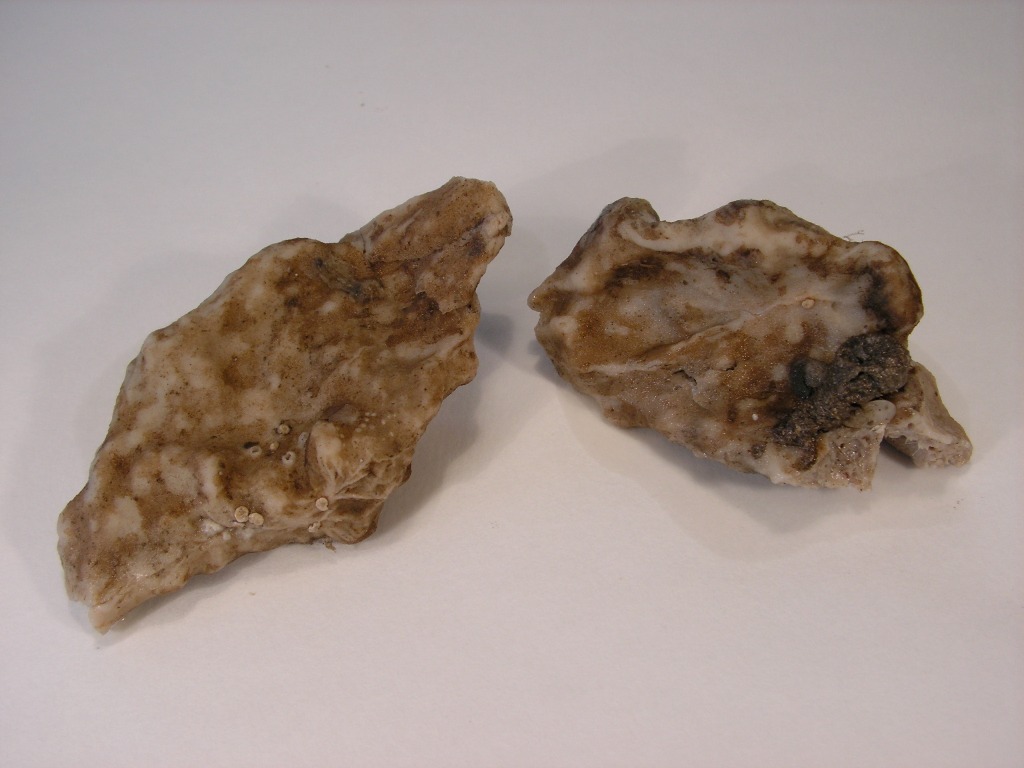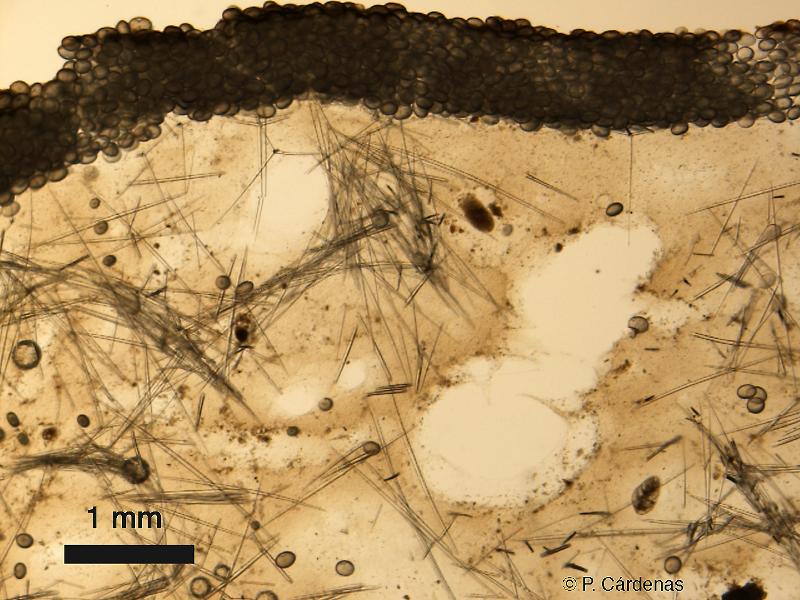Morphological description (show/hide)
| Irregularly flattened, bumby shape. 3 cm x 9-7 cm (2 pieces) | | Light brownish-yellowish. | | Light brownish. | | Uniporal, white rimmed, slightly raised or flushed with surface. Diameter: 2 mm. | | Slightly compressible. | | Some hispid areas in sheltered convulations. | | Triaenes are more or less disposed radially near the surface; this arrangement is less obvious in the interior of the sponge. Oxyasters can be found throughout the choanosome. | | Ectocortex of microrhabds poorly developed, endocortex of sterrasters well developed. Total cortex is less than 2 mm thick. | | Strongyles to oxeas: 533-1968 μm long / 15-39 μm thick; Ortho/Plagiotriaenes, rhabdome: 576-837 μm long, clads: 339-520 μm long. | | Microrhabds: 10-24 μm long / 3-5 μm thick; oxyasters: 41-122 μm (diameter); sterrasters (length/width/thickness): 145-207 μm/130-157 μm/91-120 μm |
|
Reference (show/hide)
| Cárdenas, P., Xavier, J., Tendal, O.S., Schander, C. & Rapp, H.T. (2007) Redescription and resurrection of Pachymatisma normani (Demospongiae, Geodiidae), with remarks on the genus Pachymatisma. Journal of the Marine Biological Association of the United Kingdom, 87, 1511-1525. |
| Cárdenas, P., Rapp, H.T., Schander, C. & Tendal, O.S. (2010) Molecular taxonomy and phylogeny of the Geodiidae (Porifera, Demospongiae, Astrophorida) — combining phylogenetic and Linnaean classification. Zoologica Scripta, 39, 89-106. |
|





